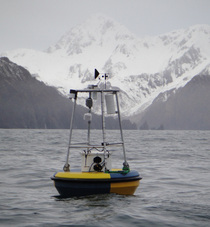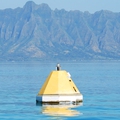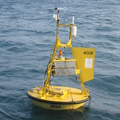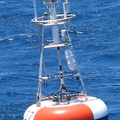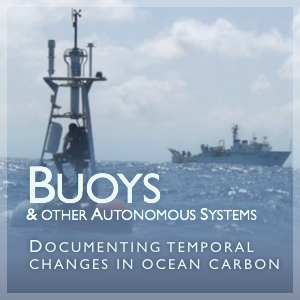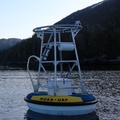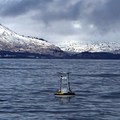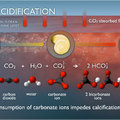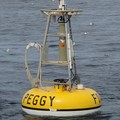GAKOA
Gulf of Alaska Ocean Acidification Mooring (59.85°N 149.5°W)
Interannual variations in temperature and salinity on the northern Gulf of Alaska (GAK) shelf reflect environmental changes that affect this marine ecosystem. Quantifying and understanding this variability requires long time series such as the 32-year record at hydrographic station GAK 1 near Seward. The GAK 1 time series appear to be a reliable proxy for the freshwater content, and the geostrophic, baroclinic component of the mass and freshwater transport in the Alaska Coastal Current along the Cape Fairfield Line. Variability in the marine environment, as reflected in ocean temperatures and salinities, and the shelf circulation, need to be quantified to understand the structure of, and changes in, the northern Gulf of Alaska marine ecosystem. The GAKOA project continues the GAK time series with a surface mooring containing a MAPCO2TM system and a surface seawater pH sensor. By measuring pH in addition to pCO2, we are able to more accurately and precisely study the changes associated with ocean acidification. The pH data will be available later in the year when the buoys are serviced.
The mooring program in Alaska has been developed through a consortium of agencies including the National Science Foundation, NOAA, the North Pacific Research Board, and the Alaska Ocean Observing System (AOOS), and is the centerpiece of the research program within the Ocean Acidification Research Center at UAF.
For more information about the first deployment of this buoy visit the AOOS website.
Data availability: archived at NCEI.

